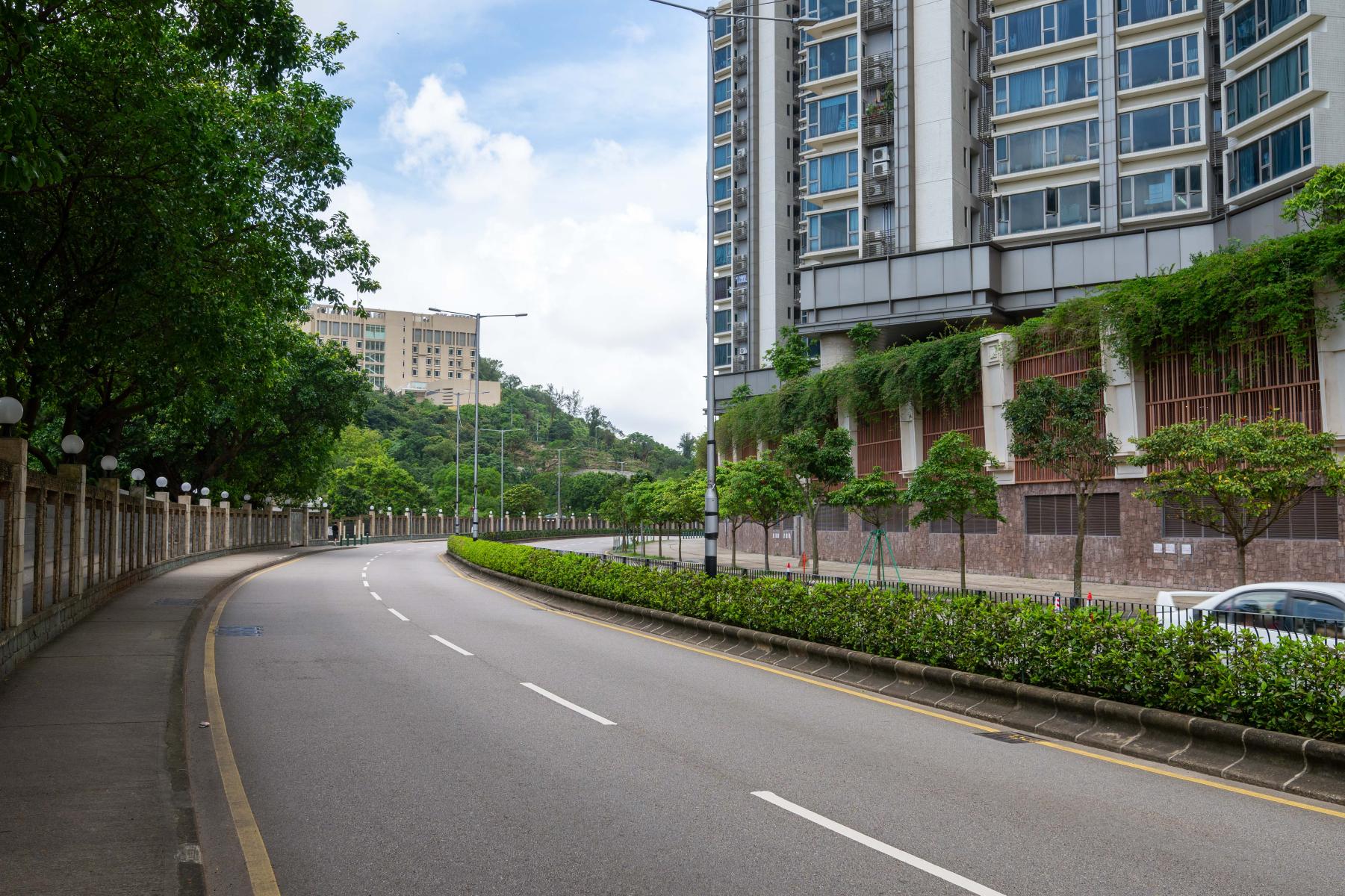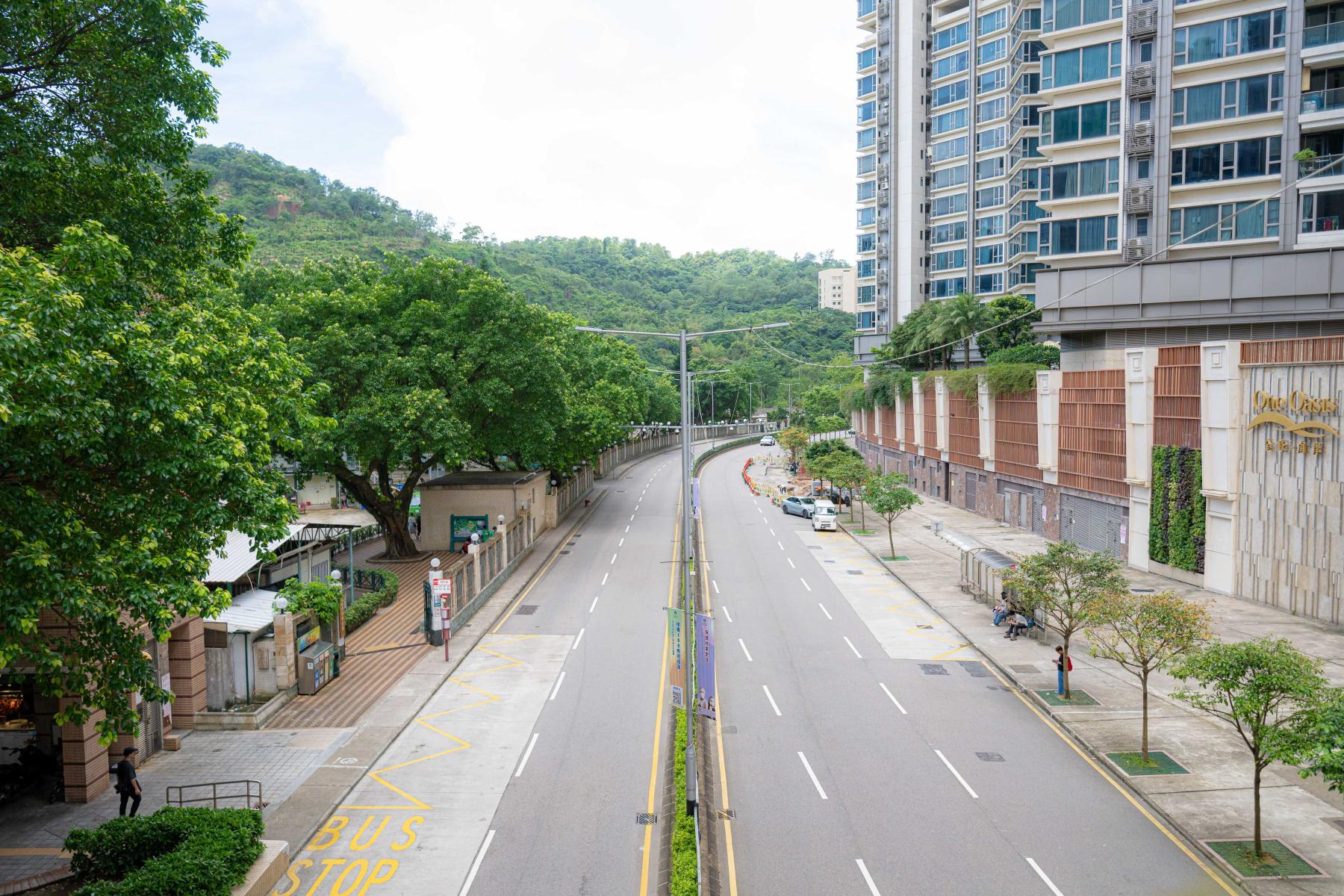
Estrada de Seac Pai Van
Estrada de Seac Pai Van begins at Rotunda de Seac Pai Van in the northeast and ends at Estrada do Campo in the southwest.
It was built on the strip of land reclaimed from the Seac Pai Van Bay at the northwest corner of Coloane Island and named after it.
The obsolete Empimac Quarry, which began its operation in 1972, stands at the southern side of the straight section of the road. The Seac Pai Van Park is on the eastern side of the road’s curvy southern section. The site of the Park was a farm founded by the Jesuit priests in the 1940s and was classified as a conservation area in September 1981 by the Portuguese administration in Macao. In November 1984, the farm was transformed into a natural park. Nowadays, the Natural and Agrarian Museum and the Macao Giant Panda Pavilion are located in the Park.
The monumental archway of the A-Ma Cultural Village marks the entrance of Estrada do Alto de Coloane, which is further ahead of the Park. Atop Alto de Coloane are a colossal sculpture of Goddess A-Ma, the Tin Hau Palace and other outbuildings. The height of the sculpture, 19.99 metres, is commemorative of Macao’s return to its Motherland on 20 December, 1999.
Rotunda da Concórdia is at the end of Estrada de Seac Pai Van, just some distance ahead from the archway. It is named after the Concórdia Reclaimed Zone located on the western side.
It was built on the strip of land reclaimed from the Seac Pai Van Bay at the northwest corner of Coloane Island and named after it.
The obsolete Empimac Quarry, which began its operation in 1972, stands at the southern side of the straight section of the road. The Seac Pai Van Park is on the eastern side of the road’s curvy southern section. The site of the Park was a farm founded by the Jesuit priests in the 1940s and was classified as a conservation area in September 1981 by the Portuguese administration in Macao. In November 1984, the farm was transformed into a natural park. Nowadays, the Natural and Agrarian Museum and the Macao Giant Panda Pavilion are located in the Park.
The monumental archway of the A-Ma Cultural Village marks the entrance of Estrada do Alto de Coloane, which is further ahead of the Park. Atop Alto de Coloane are a colossal sculpture of Goddess A-Ma, the Tin Hau Palace and other outbuildings. The height of the sculpture, 19.99 metres, is commemorative of Macao’s return to its Motherland on 20 December, 1999.
Rotunda da Concórdia is at the end of Estrada de Seac Pai Van, just some distance ahead from the archway. It is named after the Concórdia Reclaimed Zone located on the western side.
Last Update :
Please use Chrome.
© Municipal Affairs Bureau, All rights reserved
Please use Chrome.
© Municipal Affairs Bureau, All rights reserved











